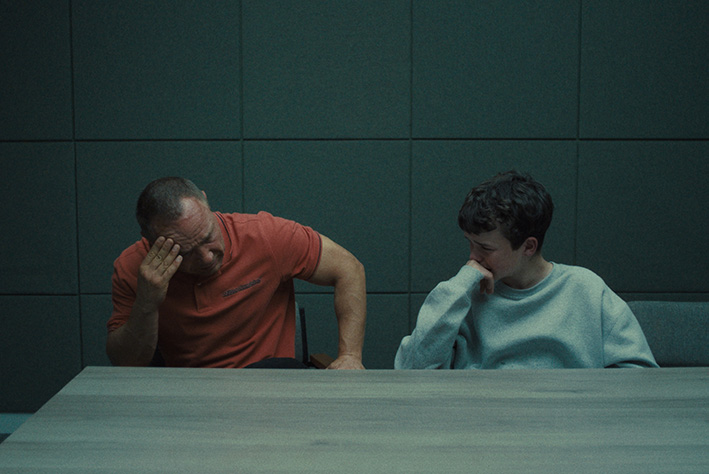Tate of the nation: Why CMOs owe society better representations of men

Opinion
Society defines masculinity and marketers are part of an ecosystem that saturates men with content that perpetuates confusing, old-fashioned stereotypes of male identity.
If it wasn’t already clear before Netflix’s Adolescence broke viewing records and hit Prime Minister’s Questions, we’re facing a crisis of masculinity. Men are carving their identity in a contradictory world that’s both challenging and pushing outdated stereotypes.
But the troubling views expressed in Adolescence aren’t confined to its school playground. A UN Women study has revealed that more than a third of young men think men should be paid more than women for the same job.
Analysis of the British Election Study found that around one-fifth of men aged 30-50 agree that women fail to appreciate what men do for them, seek power by gaining control of men and interpret innocent remarks as sexist.
And political administrations around the world now openly champion — and employ — men openly accused of serious gender-based violence.
Marketers’ role in society
What Adolescence brings to light is how these attitudes are right under our nose, often without us even realising. Those who dismiss the programme as fiction, exaggerated to make a point, are missing the bigger picture.
Cultures don’t shift on their own. Society defines masculinity, shaping men’s roles at home, at work, in public, online. And, as marketers, we are part of an ecosystem that saturates men with images, videos and opinions that perpetuate confusing, old-fashioned stereotypes of male identity.
Advertising has traditionally gone down the easy route, tending towards narrow, monolithic depictions of male roles and aspirations. Yorkie’s “It’s not for girls” would not be seen as funny now.
Unstereotype Alliance data reveals that two-thirds of men featured in advertising are under the age of 40. In reality, less than half of adult men globally fit into that age bracket.
Kantar’s own findings revealed that one in 10 men felt negatively about how they were represented in advertising in the previous year, climbing significantly for LGBTQ+ and younger men.
Cycle of gender disparity
Most frustratingly, despite progress in other areas of society, the advertising industry continues to operate under the assumption that men and women play traditional, heteronormative roles at home and at work. In doing so, they’re letting every gender down.
Parenthood exemplifies the disparity in advertising. Women in heterosexual partnerships are proven to carry a heavier mental and administrative load, even when both partners work. Is that any wonder? Our own Link ad-testing database reveals that brands test less than a quarter (24%) of baby product ads with men.
This oversight fails to engage fathers and perpetuates stereotypes that harm men and women, reinforces dated gender dynamics and contributes to a cycle of gender disparity at home and at work.
There are similar patterns elsewhere. Men are taking on more responsibilities at home, and increasingly living alone, but only 15% of household product ads are tested with men. While two in five men now use skincare products, 91% of creative testing in this category centres on women’s views.
So marketers need to move on.
The solution isn’t gender-specific strategies aimed solely at men. After all, positive portrayals of men can enhance a brand’s creative success with women too. But we’re currently going the wrong way: a 2022 UN Women report found the belief that media represents men in conventional roles like providers, leaders and businessmen has increased from 52% to 72% in four years.
That’s not to criticise men who are providers, leaders or work in business. But offering stereotypes is more than lazy marketing. They shape expectations and can become self-fulfilling — the parents who tell their kids that big boys don’t cry or the cycle of shame portrayed in Adolescence by the father disappointed in his son who is no good at football.
Stereotypes make us less relatable, impose unrealistic ideals and hinder genuine connection. When brands exclude us, it only alienates us further.
Stronger connections
Creative and media strategies that break stereotypes don’t just lead to better resonance. They can enhance overall marketing effectiveness and elevate brand value.
By thinking of men as many complex groups, portraying them positively and challenging stereotypes, brands can build stronger connections and promote positive social change. Ads that perform well on the Male Gender Unstereotype Metric, which captures whether portrayals of men set a good example for others, are also predicted to deliver greater return on investment in the short and long term, according to our research with Saïd Business School and the Unstereotype Alliance.
There’s nothing woke about targeting under-represented male groups — engaging with more men in better ways helps predispose a brand to more people and subsequently drives growth, as well as positive societal change.
Every so often, something comes along that changes the conversation for good. If Adolescence is one of those moments, we’ll all be better for it.
The danger is we think it’s shocking but ultimately not relevant to us. As an industry, it’s time we acknowledge our role in shaping perceptions and work harder to portray men in a positive, more inclusive light.
 Jane Ostler is executive vice-president of thought leadership at Kantar
Jane Ostler is executive vice-president of thought leadership at Kantar




